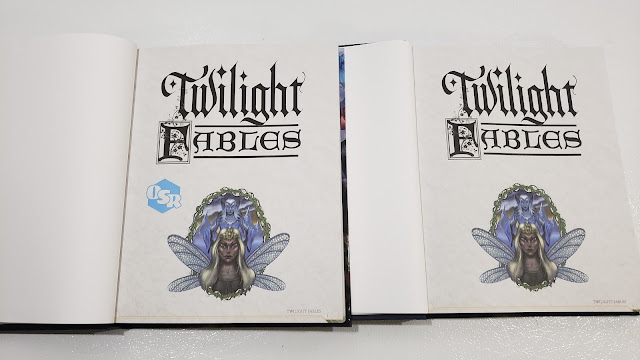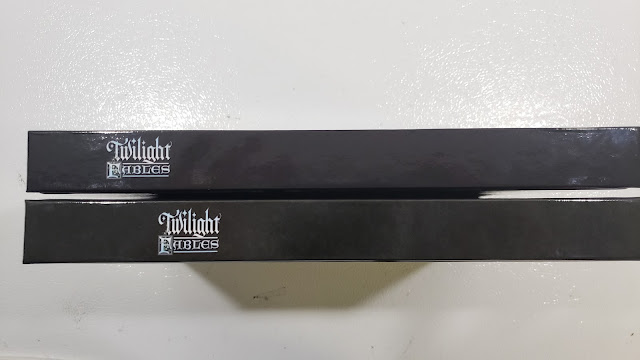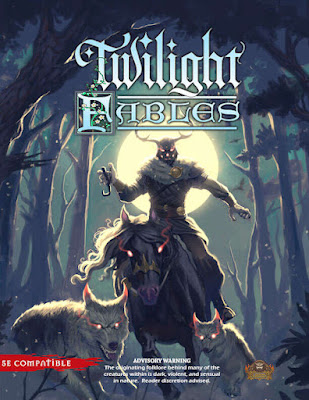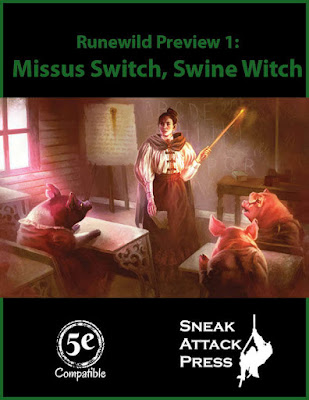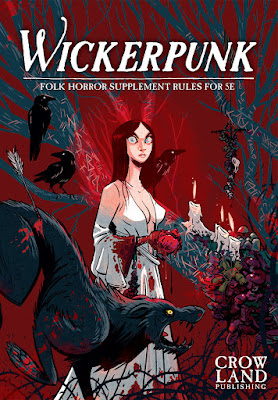As always I will be following my rules for these reviews.
Jeremy Reaban has published a good number of OSR Classes. While they say OSR on the cover they do have advancement tables for "Original," "First Edition," and "Basic/Expert" editions. So they are really quite flexible. I do note that the "Basic/Expert" table does go to level 20, so great for Labyrinth Lord and Basic Fantasy, but you will need to cut off at 14th level for Old School Essentials. Keep in mind these classes all predate OSE in publication.
All his classes, and indeed all his publications, are Pay What You Want. I like that. Given he is buying art for all of these at least pay him a couple of bucks.
Here are his classes that I think work well with the witch concept.
PDF. 15 pages. Color cover.
Covers the basics of the class including requirements, alignment, and all the other expected details. There is a section on the special abilities of the class, in this case abilities all witches get. Each witch also gets a "Focus" or what I have called a "Tradition" but could be read as archetype or even sub-class. These include Black Witch, Fire Witch, Frost Witch, Light Witch, Mind Witch, Storm Witch, Wander Witch, Water Witch, White Witch, Weather Witch, and Wood Witch for a total of 11 (two more would have been great). Each gets some powers and a selection of spells unique to that Focus.
This is followed by the advancement tables. Witches get bonus spells for high Charisma. And the selection of spell common to all witches.
There are 9 NPC witches of various levels and alignments.
There are some design notes that talk about the lack of an official witch class and how most of the OSR ones are all done by "one guy" (no idea who that could be).
We end with the OGL statement.
All in all a really fun class. If this one works for you then by all means go with it. There are a lot of great ideas here.
PDF. 14 pages. Black & White cover.
This is the "new" warlock from Reaban. I'll get to the "old" one in a bit.
Essentially this is a conversion of the 5.1 SRD warlock and I am totally happy with that. You get a Pact boon and a bunch of Eldritch Invocations.
Listed are various Patrons the warlock can take. We get the Fiend, the Great Nature Spirit (this one is new), Faerie Queen (or King), the Great Old One, Elemental Prince, and the Celestial. Each gives the warlock powers and a collection of spells.
This is followed by the advancement tables (with level titles!). Warlocks get bonus damage on their Eldritch Blast for high Charisma. And the selection of spells common to all warlocks.
There are 7 NPC warlocks and some design notes. The design notes in particular discuss why this is the second Warlock Reaban has done and how the old warlock is now the Kineticist.
PDF. 8 pages. Color cover.
This was the first OSR class done by Reaban and was originally called The Warlock. This class is a bit different. It is like a sorcerer in that has innate magic, but this is not due to bloodline. It has some blasty-like warlock powers, and some others making the class fairly unique.
There are the advancement tables (with level titles!). Kineticist get bonus damage on their Arcane Bolts for high Charisma.
It is a new idea and I really like it. This one is so early that there are no NPCs.
PDF. 6 pages. Black & White cover.
Ah. Now here is a class that is not all that witchy, but one that is likely to come up in any game where there are a lot of witches and demons. I have also played around with an exorcist class in the past and this one works so well for me I really don't think I need to do one now.
Exorcists are a bit warrior, bit cleric.
There are the advancement tables (with level titles!) but no NPCs yet in this one.
The class does exactly what is should do and does it well.
PC3 - The OSR Witch HunterPDF. 7 pages. Color cover.
Can't have witches and not expect a few witch hunters. Like many of the "witch hunter" classes you can find this one is not limited to hunting witches alone but any supernatural evil. Like the Exorcist this one is a combination of fighter and cleric, though more leaning on the fighter side (they are considered a sub-class of the fighter). They get a number of abilities to allow it to hunt down their prey and vanquish them.
The witch hunter also gets a Bard-like Lore ability and the ability to read magic. They can even turn undead at 3rd level.
There are the advancement tables (with level titles) for First Edition, Original Edition, Basic/Expert Edition, and Cyclopedic Edition (to 36th level).
PDF. 9 pages. Color cover.
This might be stretching my "witch" idea, but I did do a book, the Cult of Diana: The Amazon Witch, and I like to use this book with that one.
This one gives us the Amazon Warrior class. It is a fighter, but with a more athletic bend to it. The have to have minimum scores of 15 in Strength, Dexerity, AND Constitution. The Amazon Warrior can't use magic items unless that magic item is a weapon and provided to them by a god.
There are the advancement tables (with level titles) for First Edition, Original Edition, Basic/Expert Edition, and Cyclopedic Edition (to 36th level).
There are 10 NPCs including a Red Martian (nice!), Zenia, and "Crimson Sonia" who is 25th level.
There is also a section on the daughters of the gods and how they can generate ability scores. There are also role-playing notes on the children of gods.
All in all a really fun additional class.
PDF. 15 pages. Color cover.
A related class, this one has also been called the houri, the courtesan, the temptress, or the hetaera. It is a Charisma based class that uses charms. She is also a poisoner along with her other skills, so in many ways she is closer in nature to the thief or assassin.
There are the advancement tables (with level titles) for First Edition, Original Edition, and Basic/Expert Edition.
This one also has some new magic items. There are 19 NPCs.
PDF. 15 pages. Color cover.This class is another spellcasting class, this time ismanipulates the emotions of others. This class is a magic-user sub-class.
There are the advancement tables (with level titles) for First Edition, Original Edition, and Basic/Expert Edition. There is also spell advancement to the 7th level.
The best part of this class, at least for me, are the new spells. There 33 in total. Some come from the d20 SRD, but that is fine. They work great here.
There are only 2 new NPCs here.
And finally there are two new Witch Focuses for the Witch Class; a Desire Witch and a Dream Witch.
Works great for me to be honest.
--
Lots of great classes here and I didn't even review them all.

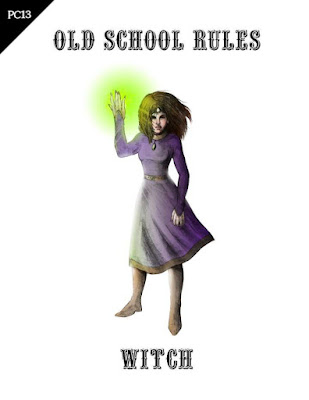

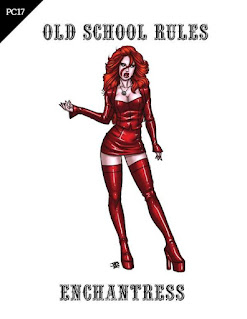
.jpg)










